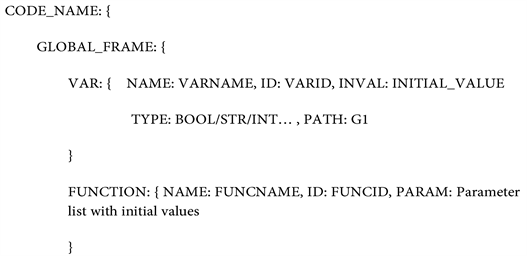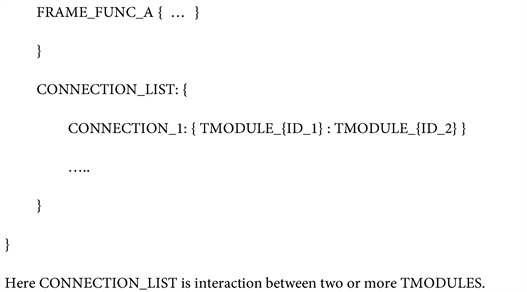Interlanguage Translation Utility with Integrated Machine Learning Algorithms ()

1. Introduction
Translating code from one language to another is not just converting syntax between these languages. In this process conversion needs to be done maintaining code structure as much as possible. There are many code translators which are for translating from one specific language to another [1] - [6] .
However, for translating between not only two exact languages, more complex methods need to be under consideration. In [7] an intermediate language is used for storing translation data while transferring into another language.
In this paper, we represent interlanguage translator that is powered with machine learning algorithm, which is comparing translation result if needed and reports difference between source and makes changes in translation algorithms. In this way translation is being done with higher accuracy. For adding new language in translator, extension of that language is needed, which is a basic map for those language keywords. If new language does not support any object (for example pointer in C++ or lambda in Python), translator algorithm tries to find analogue of that, with mentioning code part or line where this approximation has been done.
For proposed utility tests, Python and Java programming/scripting languages are selected with their extensions, because these are two most commonly used object-oriented languages.
Few acronyms used in the text are explained in Table 1.
2. Workflow and Engine
Main workflow of tool consists of two parts: programming to intermediate language translator and AI comparator/corrector (Figure 1).
Run of tool is starting with reading source code that needs to be translated and recognizing keywords to load libraries. After that libraries that are sourced into code are being found and located with individual ID number. This is for being able to link to these libraries if needed.
Next step is separating code into FRAMEs. Everything from first level of source code is being considered as TMODULES of GLOBAL_FRAME. All other FRAMEs are considered to be sub-FRAMEs of GLOBAL_FRAME too. After source code division into FRAMEs, TMODULES of each FRAME is being separated with unique ID, path, type, initial value and name. This ensures each TMODULE to have exact place in code after translations, also with keeping its type for being able to declare them in statically typed programming languages (like C++ or Java).
Paths for FRAMES, TMODULES and all attributes that are collected from source code, later will be stored in intermediate language (Figure 2).
In given example (Figure 2) G1 is abbreviation for GLOBAL_FRAME. All functions, classes, variables without parent FRAMEs are considered as child TMODULES of GLOBAL_FRAME. As all TMODULES have unique ID and exact place, same name variables from different FRAMEs will not be overlapped:
・ TMODULE_{a}: G1/foo/a
・ TMODULE_{a}_1: G1/bar/bar_foo/a
![]()
Table 1. Explanation for acronyms used in text.
![]()
Figure 1. Explanation for acronyms used in text.
![]()
Figure 2. Data saved in intermediate language.
In general intermediate language that is used can be described as in below:


3. Translation to Second Language, Back Translation and AI
In translation to second language step, already translated into intermediate language TMODULES are being replaced with second language keywords. In this step, libraries for second language are included. If any function cannot be translated into second language, proper note is being written and outputed file contains empty module of second language. This is the part, where manual checks are needed [8] .
If translation is done with success status, programm is waiting for command to either do back translation and comparison with source code or to exit and write translated file.
In back translation already translated into second language code is treated as source code and upper described methods are being applied to it. Later new code with language 1 being compared with source language 1 code. All differences are marked and based on that AI makes changes in TMODULE path or connection list.
Successful translation pass rate is selected to be 60%. This means comparison result less than 60% will force AI algorithms to make corresponding changes in translation algorithm. If comparison rate is higher than 60%, translation will be treated as succeed.
Translation rate is being obtained from two comparisons. First is direct text comparison between first language source and post-processed, back-translated first-language code. In this comparison, code blocks (this can be any TMODULE or any FRAME) which are matching but are located on different place of correct FRAME, are considered to be matching. Second comparison is two intermediate language comparisons. In this part, intermediate language that is obtained on first language into second language translation is compared with back translation intermediate language. In this step upper described method of approximation is applied. Final comparison result is the arithmetic mean of these two results.
4. Conclusion
In this paper interlanguage translation utility is presented. This utility is using intermediate level language, so that any other language translation can be added into the tool as an extension. After translation is done, tool performs minor changes to ensure higher source comparison rate. Tool can achieve about 65% comparison rate for translated files compared with source code.